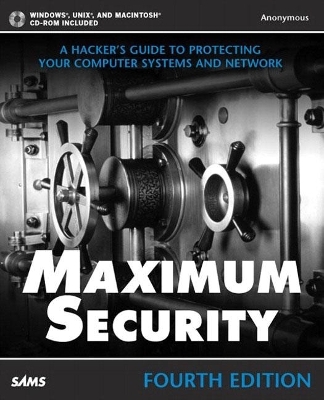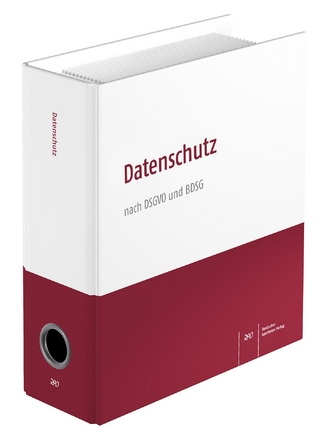
Maximum Security
Sams Publishing
978-0-672-32459-8 (ISBN)
- Titel ist leider vergriffen;
keine Neuauflage - Artikel merken
Maximum Security, Fourth Edition provides updated, comprehensive, platform-by-platform coverage of security issues, and includes clear, to the point descriptions of the most common techniques hackers use to penetrate systems. This book provides information for security administrators and others interested in computer and network security and provides them with techniques to take steps to protect their systems.
Anonymous is an experienced computer hacker who specializes in testing security of various networking platforms. He was convicted of a series of financial crimes in the late 1980s and now works as a writer, trainer, and security consultant. Billy Barron (billy@metronet.com) is an architect and developer of security products for Avatier Corporation. Previously, he worked as the architect of a storage resource management product,as a Java/OO consultant and as a Unix/VMS system administrator. He founded the Java Metroplex User Group (JavaMUG http://www.javamug.org/) and was the first webmaster in the Dallas/Fort Worth area. He has co-authored and tech edited numerous books including Maximum Security, Web Programming Unleashed, Tricks of the Internet Gurus, Maximum Java 1.1, Web Commerce Unleashed, Creating Web Applets with Java, and Internet Unleashed. Greg Shipley is CTO for Neohapsis, an information security consultancy. He is a contributing editor with Network Computing magazine. Jonathan Feldman is a contributing editor with Network Computing magazine, where he writes a column and frequently contributes technical workshops.,/P> Robert Blader works at the Naval Surface Warfare Center, where he performs intrusion detection, security training, and network forensics. He has contributed to SANS GIAC courses and SysAdmin magazine. Chad Cook has worked for ten years in security, with emphasis on secure product architecture, network and operating system security, and new security technologies. David Harley maintains a number of virus and security related information resources and writes regularly for Virus Bulletin. Joe Jenkins is a system administrator/security consultant with NoWalls, Inc. and writes for magazines such as SecurityFocus. L.J. Locher is a network adminstrator, programmer, and security consultant who has written articles for Windows 2000 Magazine. Toby Miller is a security engineer for Advanced Systems Development and is the author of several papers published for SecurityFocus and the SANS Institute. Brooke Paul works as an information technology and security consultant. Nicholas Raba is a well-known expert on Macintosh security. Gregory White is Vice President of profession services at SecureLogix, and is a former professor of computer science at the US Air Force Academy.
(NOTE: Each chapter concludes with a Summary.)
Introduction.
Why Did We Write This Book? System Requirements. About Examples in This Book. A Final Note.
I. SECURITY CONCEPTS.
1. Building a Roadmap for Securing your Enterprise.
Reactive Versus Proactive Models. Understanding Your Enterprise. Risk Assessment: Evaluating Your Enterprises Security Posture. Identifying Digital Assets. Protecting Assets. Incident Response Policy. Training Users and Administrators. 40,000-Foot Review.
2. The State of the Net: A World at War.
Hacking, Cracking, and Other Malicious Behavior. Governments at War. The State of the Government. The State of the Corporate Sector. A Warning. Additional Informaiton.
3. Hackers and Crackers.
The Difference Between Hackers and Crackers. Tools of the Trade. Exploits and the SANS Top 20.
4. Mining the Data Monster.
Information Overload. How Much Security Do You Need? General Sources. Mailing Lists. Usenet Newsgroups. Vendor Security Mailing Lists, Patch Depositories, and Resources.
5. Internal Security.
Internal Security: The Red-Headed Stepchild. Internal Risks: Types of Harm and Vectors. Risk Mitigation Policies. Products. Resources.
II. HACKING 101.
6. A Brief TCP/IP Primer.
What is TCP/IP? How Does TCP/IP Work? The Individual Protocols. IPsec, IPv6, VPNs, and Looking Ahead.
7. Spoofing Attacks.
What is Spoofing? Internet Security Fundamentals. Methods of Authentication. The Mechanics of a Spoofing Attack. Documents Related Specifically to IP Spoofing. How Do I Prevent IP Spoofing Attacks? Other Strange and Offbeat Spoofing Attacks.
8. Personal Privacy.
Degrees of Exposure. Web Browsing and Invasion of Privacy. Borwser Security. Your Email Address and Usenet. At Work. A Warning.
9. Dispelling Some of the Myths.
When Can Attacks Occur? What Kinds of Attackers Exist? Operating Systems Used by Crackers. Is There a Typical Attack? Who Gets Targeted Most Frequently? What is the Motivation Behind Attacks?
III. A DEFENDERS TOOLKIT.
10. Firewalls.
What is a Firewall? Other Features Found in Firewall Products. Firewalls Are Not Bulletproof. A Look Under the Hood of Firewalling Products. Programmers Bypassing the Firewall. Pitfalls of Firewalls. Firewall Appliances. Building Firewalls in the Real World. Sample Failures of Firewall Technology. Commercial Firewalls.
11. Vulnerability Assessment Tools (Scanners).
The History of Vulnerability Scanners. How Vulnerability Scanners Work. What to Look For When Choosing a Scanner. Fundamental Shortcomings. Top Vulnerability Scanners. Other Vulnerability Scanners.
12. Intrusion Detection Systems.
An Introduction to Intrusion Detection. Network-Based IDSs. Host-Based IDSs. Anomaly-Based IDSs. What to Look for When Choosing an IDS. Snort and Other Open Source IDS Solutions. Intrusion Detection Product Lising.
13. Logging Tools.
Why Log? Logs from a Cracking Perspective. Forming a Logging Strategy. Network Monitoring and Data Collection. Tools for Analyzing Log Files.
14. Password Security.
An Introduction to Password Cracking. The Password-Cracking Process. The Password-Crackers. Password Crackers for Windows. Unix Password Cracking. Cracking Cisco, Application, and Other Password Types. Improving Your Sites Passwords. Other Resources.
15. Sniffers.
Sniffers as Security Risks. What Level of Risk Do Sniffers Represent? Has Anyone Actually Seen a Sniffer Attack? What Information Do Sniffers Capture? Where Can I Get a Sniffer? Defeating Sniffer Attacks.
IV. WEAPONS OF MASS DESTRUCTION.
16. Denial-of-Service Attacks.
What is Denial of Service? Exploitation and Denial of Service. Denial-of-Service Attack Index. Other DoS Resources.
17. Viruses and Worms.
Understanding Viruses and Worms. Objects at Risk of Virus Infection. Who Writes Viruses, and Why? Antivirus Utilities. Future Trends in Viral Malware. Publications and Sites.
18. Trojans.
What Is a Trojan? Where Do Trojans Come From? How Often Are Trojans Really Discovered? What Level of Risk Do Trojans Represent? How Do I Detect a Trojan? Resources.
V. ARCHITECTURE, PLATFORMS, AND SECURITY.
19. Network Architecture Considerations.
Network Architecture. Protecting the Castle.
20. Microsoft.
Windows 9x and Windows Me. Windows NT. Internal Windows NT Security. Windows 2000. Windows XP. Modern Vulnerabilities in Microsoft Applications.
21. Unix.
A Whistle-Stop Tour of Unix History. Classifying Unix Distributions. Security Considerations in Choosing a Distribution. Unix Security Risks. Breaking set-uid Programs for Fun and Profit. Rootkits and Defenses. Host Network Security. Telnet. An Essential Tool: Secure Shell. FTP. The r Services. REXEC. SMTP. DNS. finger. SNMP. Network File System. The Caveats of chroot. Better the Daemon You Know. Assessing Your Unix Systems for Vulnerabilities.
22. Novell Netware.
The OS Facts of Life. Watching the Big Three. Further Reading.
23. Routers, Switches, and Hubs.
The Problems with Infrastructure Equipment. Keeping Up with OS Revisions. Securing Hubs. Securing Switches. Securing and Configuring Routers. Network Management Considerations. Preventing Spoofing and Other Packet Games. Further Reading and Reference.
24. Macintosh.
Mac OS X—Apples New Operating System. Establishing the Macintosh as a Server. Vulnerabilities on the Macintosh Platform. About File Sharing and Security. Server Management and Security. Firewall Protections. Internal Security. Password Crackers and Related Utilites. Anonymous Email and Mailbombing. Macintosh Viruses, Worms, and Antivirus Solutions. Spyware and Detection. Resources.
25. Policies, Procedures, and Enforcement.
The Importance of Security Policies. Site and Infrastructure Security Policy. Acceptable Use. Enforcement of Policy.
VI. SECURITY AND INTEGRATED SERVICES.
26. Secure Application Development, Languages, and Extensions.
Security and Software. What Is a Secure Application? A Security Architecture. Security-Aware Designs. Secure Coding Practices.
27. Wireless Security Auditing.
Wireless LAN Topology. Access Points. Antennas. Wireless Networking Cards. Handheld Devices. Constructing a Wireless Test Lab. Wireless Attacks. Surveillance. War Driving. Client-to-Client Hacking. Rogue Access Points. Jamming (Denial of Service). Practical WEP Cracking.
VII. REFERENCES.
A: Security Bibligraphy—Further Reading.
General Internet Security. TCP/IP. On Netware.
B: How to Get More Information.
Establishment Resources. Underground Resources.
C: Vendor Information and Security Standards.
Vendor Security Information. FRC Documents Relevant to Security.
Whats on the CD-ROM.
Glossary.
Index.
| Erscheint lt. Verlag | 16.12.2002 |
|---|---|
| Verlagsort | Indianapolis |
| Sprache | englisch |
| Themenwelt | Informatik ► Netzwerke ► Sicherheit / Firewall |
| Informatik ► Theorie / Studium ► Kryptologie | |
| ISBN-10 | 0-672-32459-8 / 0672324598 |
| ISBN-13 | 978-0-672-32459-8 / 9780672324598 |
| Zustand | Neuware |
| Haben Sie eine Frage zum Produkt? |
aus dem Bereich


